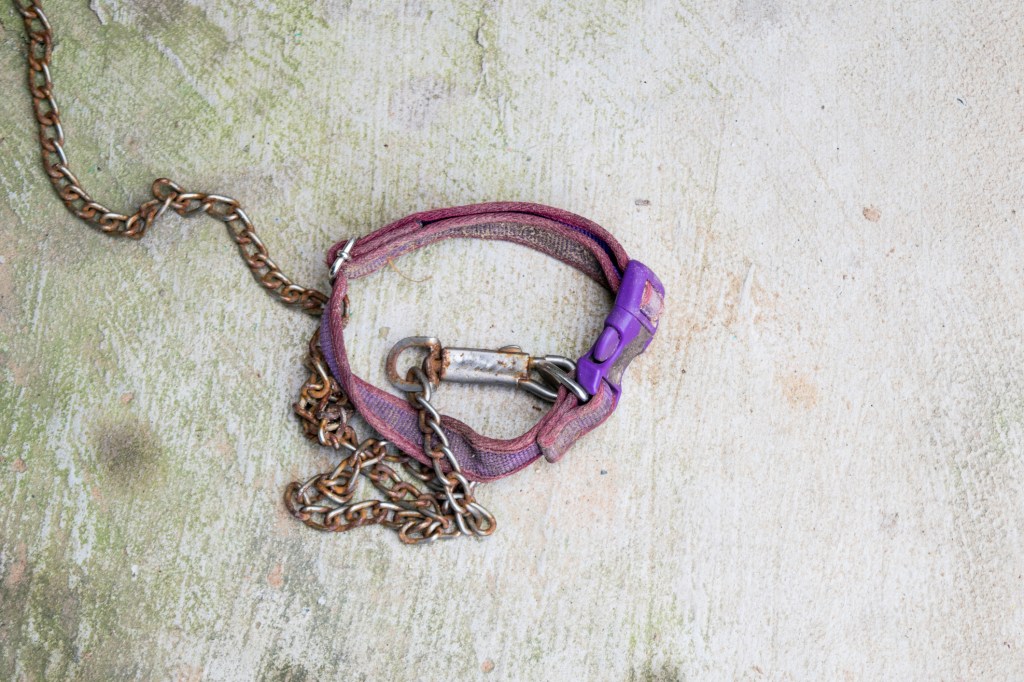If you are a dog parent, you know the importance of dog collars. They play a vital role in offering identification, safety, and control for dogs during walks or training. However, they can also be a cause of many health and safety issues if you choose the wrong one. Specifically, an embedded collar.
An embedded collar might seem harmless, but its consequences can be severe for your beloved canine companion. Therefore, it is essential for every dog parent to understand what an embedded collar is and the potential health risks it poses for your dog. Here’s a guide that contains everything you need to know about embedded collars.
What is an embedded collar

An embedded collar is a serious and potentially life-threatening condition where a dog’s collar becomes deeply embedded in their neck due to prolonged wear. This typically happens when the collar is not adjusted properly as the dog grows, causing it to gradually tighten around their neck.
These situations happen when the collars are consistently too tight, causing friction and irritation against the dog’s skin. Over time, this friction leads to the skin breaking down and growing over the collar, resulting in a painful and dangerous situation for your dog.
Why is it dangerous for dogs
An embedded collar can pose a significant health risk to your pup, even putting their life in danger. In milder instances, this might impact just the surface layers of your dog’s skin. However, in more severe situations, the collar could penetrate deeper into the muscle and connective tissue.
Collars, when embedded, can generate persistent wounds, which could lead to bacterial infections. For dogs spending prolonged time outdoors, these wounds might attract fly larvae that lay eggs in the affected area, resulting in maggots or myiasis.
Such wounds cause a lot of pain for your dog, and if infections worsen, they can result in severe illnesses like diskospondylitis, actinomycosis, meningitis, and more. You must promptly address embedded collars to avoid any further complications.
Signs and symptoms
It is essential to recognize the signs indicating your furry friend might have an embedded collar in order to deal with it quickly and effectively. Here are some of the signs and symptoms you can look for in your dog:
- Frequent whining, crying, shaking, or scratching around the head and neck area
- Sensitivity to touch, potential yelping, or snapping due to pain
- Visible wounds around the neck with signs of blood, pus, scabbing, or crusting of fur
- Presence of a foul odor emanating from the wound
How do you prevent your dog’s collar from becoming embedded
Let’s take a look at some of the ways you can prevent embedded collar from occurring at all:
Preventing embedded collars
- Regularly check your pet’s collar for a comfortable and safe fit.
- Maintain a two-finger width between the collar and the neck when using a nylon or leather collar.
- Ensure identification tags are always kept on the collar.
Restraining regulations
- Dogs that need to be tied must have a nylon or leather collar or harness.
- The tying device should be at least six feet long and attached to the collar/harness with a swivel device to prevent tangling.
- The animal must not escape the owner’s property while restrained.
Type of collars likely to be embedded

As a dog parent, you must ensure the well-being of your dog at all times. The first thing to make note of is the type of collar you’re using for your dog and if it’s likely to be embedded. Here are a few collar types that have greater chances of becoming embedded in your dog’s skin:
- Ropes
- Chains
- Cords
- Choke collars
- Prong or pinch collars
Ideally, the best collar for your pet would be a nylon or leather collar. Alternatively, you can ditch the collar completely and go for a harness instead.
For training purposes, you can use a head control collar, for instance, a Gentle Leader or Promise Collar. These collars act as head harnesses, allowing normal activities like drinking, eating, panting, and playing. However, you have to ensure that it is correctly positioned. It should be high around the dog’s neck, behind the ears, making a figure eight around the muzzle. The neck strap should be snug, allowing the nose loop to move but not slip off. Moreover, the dog should not wear it while sleeping or when it’s not walking or training.
Frequency of dog collars becoming embedded
If you’re attentive towards your pet and keep regular track of their well-being, an embedded collar is easily preventable. Thus, the frequency of this happening to your dog is not high. All you have to do is use suitable collars and check the fit of your pup’s collar regularly as they grow in size.
More often than not, collar issues arise due to neglect and abuse. Dogs who are kept chained or caged in backyards or outside homes are likely to find themselves in such situations. Abandoned dogs or stray dogs are most likely to have embedded collars, resulting in severe wounds that can cost them their life.
Treatment for embedded collars
In the case of an embedded collar in a dog, you must seek treatment from a veterinarian and book an appointment as soon as possible. If there is no immediate appointment available, take your dog to the emergency clinic for treatment.
The treatment depends a lot on the type of wound on your dog’s skin. The vet will likely sedate your dog since these wounds can be painful. The next step is to remove the collar carefully. The vet will check the wound for signs of infection or if a foreign object has entered it. Then, the vet will probably shave the area around the wound, clean it with an antibacterial product, and treat it accordingly. The vet may also prescribe antibiotics and pain control medications. Be sure to follow the medication course rigidly.









